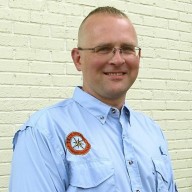First Aid: Treating Lightning Injuries
A 45-year old man was struck by lightning earlier this week while playing soccer at a local park in Pittsburgh. Bystanders found him unresponsive and not breathing so they immediately dialed 9.1.1. and began CPR. Paramedics soon revived the man, and by last report, he remains in critical condition, though still alive.
While such incidents may be statistically rare, for all practicable purposes, they aren’t necessarily uncommon. Just this week alone, there have been several such incidents reported across the country where the victim would have died but for first aid received from bystanders. Better yet, a few of them were soon happily giving interviews on television from their hospital beds.
But what if during your next hike, paddle, or other outdoor adventure, you saw someone in the same condition after a lightning strike, would you know how to help them?
SCENE SURVEY
The mantra of all rescuers should always be scene safety. That is, you should continually strive to minimize the danger to yourself and other rescuers, protect your patient, and, if possible, bystanders.
Despite common belief, victims of a lightning strike do not carry any residual electrical charge so they are safe to touch immediately. So get your patient and yourself into a safe area so that you can begin treatment. After all, despite another common belief, lightning can strike twice in the same place, even several times.
Dial 9.1.1. as soon as possible. All victims of lightning, even if they suffer only seemingly minor injuries, should at least be evaluated at an emergency department.
PRIMARY SURVEY
Your next step is to find and fix any life threats. A direct strike of lightning typically results in simultaneous cardiac and respiratory arrest. That’s because the surge of electricity disturbs both the natural rhythm of the heart and that part of the brain which controls the respiratory drive and those muscles used for breathing. So check for a pulse and respirations.
If your patient is pulseless and breathless, then begin CPR which involves chest compressions and rescue breathing. While this can certainly be stressful and scary, the good news is that CPR is highly effective in these situations.
WHAT IF THERE ARE MULTIPLE PATIENTS?
It is not unusual after a lightning strike to have more than one victim, if not many. One incident that springs to my mind occurred about fifteen years ago in Ohio when, as friends and family watched a local baseball game, a blast of lightning left several players and fans in serious condition strewn about the field, at least one in cardiac arrest.
The general rule of thumb in providing emergency medical care to multiple victims is to triage them by prioritizing treatment only amongst those who are alive, while letting the dead, well, stay dead. But in the case of a lightning strike, the exception is to reverse triage by first focusing on the seemingly dead victims.
Why? Because, as I briefly mentioned above, the success rate of CPR is so high. This is probably because such victims are usually young and healthy, whereas the more standard victim of cardiac arrest has a underlying medical condition and contributing factors.
WANT TO LEARN MORE?
Too often the tendency of bystanders in a medical emergency, especially in cities, is to not get involved because they “don’t want to hurt” the victim, and/or figure that EMS will arrive soon anyway. But in the case of a cardiac arrest, if you remember that one can die, or at least suffer serious brain damage, in as little as 3 minutes, and that the national average of EMS response time is 7 minutes in urban locations — and 14 minutes in more rural locations — then you don’t need a PhD in Mathematics to conclude that what you do to help, no matter how seemingly trivial, can literally mean the difference between life and death. Besides, you shouldn’t be too worried about hurting a victim who is already technically dead!
So consider at least taking a CPR course, perhaps even Wilderness First Aid, to learn more about how you can best deal, not just with a lightning strike, but a diverse mix of other medical emergencies.
After all, you are the help until help arrives.

